Container gardening is a versatile and rewarding way to grow plants, even in small spaces like balconies, patios, or indoor areas. Combining herbs and flowers in a single container not only enhances aesthetics but also offers practical benefits, including pest control, pollinator attraction, and culinary use. This guide provides a detailed approach to how to mix herbs and flowers in one container, covering plant selection, soil preparation, container choice, design principles, care, and maintenance for a thriving garden.
1. Benefits of Mixing Herbs and Flowers
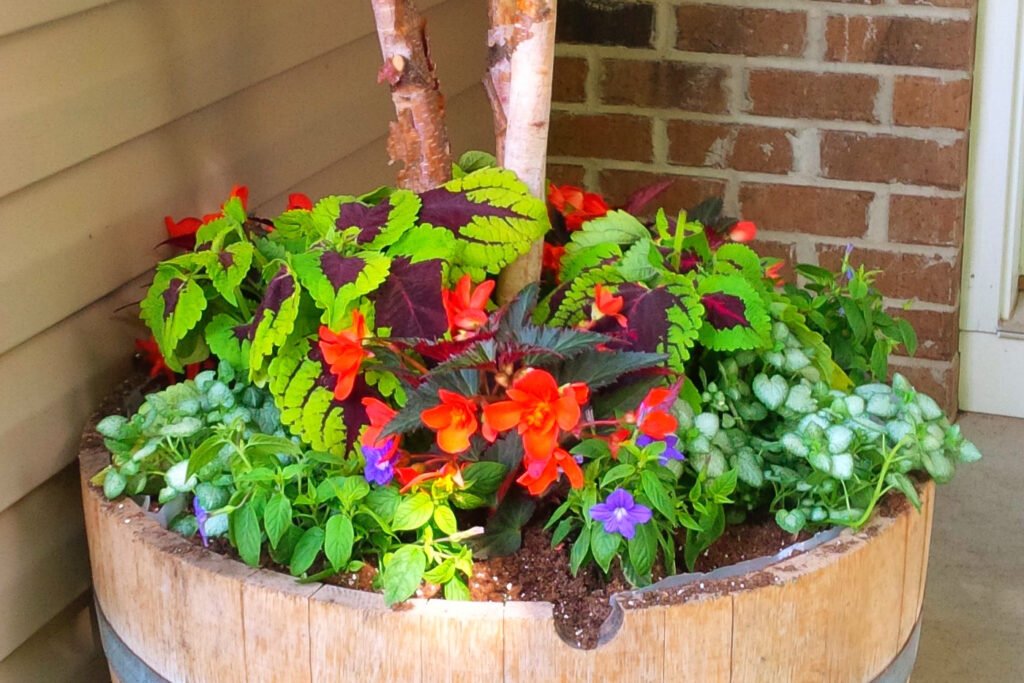
Before diving into the “how,” it’s important to understand the benefits:
- Aesthetic Appeal: Combining colorful flowers with lush herbs creates a visually pleasing arrangement.
- Pollinator Attraction: Flowers attract bees, butterflies, and beneficial insects, improving herb productivity.
- Pest Management: Certain flowers naturally repel pests that commonly affect herbs.
- Culinary Use: Harvest fresh herbs directly from an attractive display.
- Space Efficiency: Grow multiple plant types in a single container, ideal for limited spaces.
By mixing herbs and flowers, gardeners can create a functional and beautiful container garden.
2. Choosing the Right Container
The container sets the foundation for a successful mixed planting:
- Size: Choose a container large enough to accommodate root growth for both herbs and flowers.
- Small pots (6–8 inches) for compact arrangements.
- Medium pots (10–14 inches) for larger, bushier plants.
- Material:
- Plastic: Lightweight, retains moisture.
- Clay/Terracotta: Attractive and stable but dries out faster.
- Wood: Rustic aesthetic; treated wood lasts longer outdoors.
- Drainage: Ensure adequate drainage holes to prevent waterlogging.
- Shape: Wider containers provide room for multiple plants, while vertical or tiered containers can create height layers.
The right container ensures healthy growth and prevents overcrowding.
3. Soil Preparation
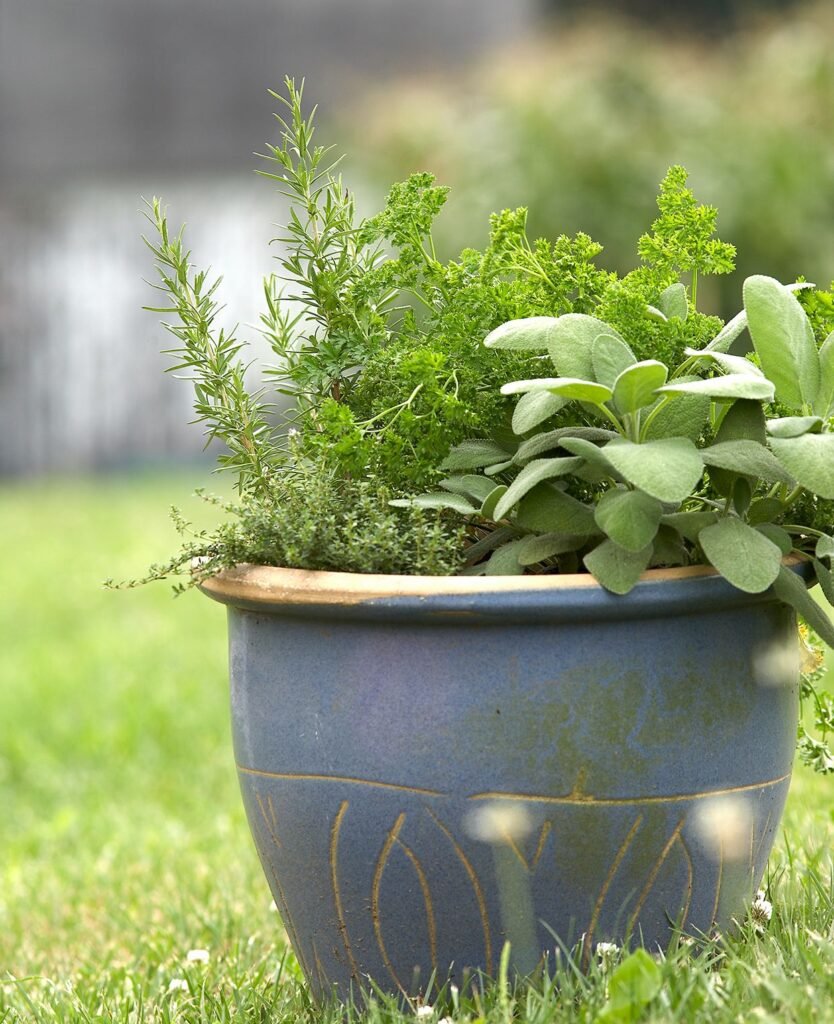
Healthy soil is critical for mixed container planting:
- Well-Draining Soil: Use a high-quality potting mix that allows excess water to drain while retaining moisture.
- Nutrient-Rich: Mix in compost or slow-release organic fertilizers to provide balanced nutrition.
- Moisture Retention: Add coco coir or peat moss to retain water without soggy soil.
- pH Considerations: Most herbs and flowers prefer slightly acidic to neutral soil (pH 6–7).
Proper soil ensures both herbs and flowers thrive without nutrient competition.
4. Selecting Compatible Herbs and Flowers
Choosing compatible plants is key to a successful mixed container:
A. Herbs
Select herbs that thrive in container conditions:
- Basil: Needs full sun; pairs well with colorful flowers.
- Thyme: Compact, drought-tolerant; good for trailing arrangements.
- Mint: Vigorous growth; best contained to prevent spreading.
- Parsley: Prefers partial sun; adds texture.
- Chives: Upright growth; edible flowers add aesthetic value.
B. Flowers
Select flowers that complement herbs visually and functionally:
- Marigolds: Repel pests and add bright color.
- Petunias: Trailing varieties for cascading effect.
- Nasturtiums: Edible flowers; repel aphids.
- Pansies/Violas: Compact, colorful blooms.
- Calendula: Bright, edible flowers; attract pollinators.
C. Compatibility Tips
- Sunlight Needs: Pair sun-loving herbs with sun-loving flowers.
- Water Requirements: Combine plants with similar watering needs.
- Growth Habit: Mix upright, trailing, and bushy plants for visual balance.
Choosing compatible herbs and flowers ensures healthy growth and minimal maintenance.
5. Design Principles for Mixed Containers
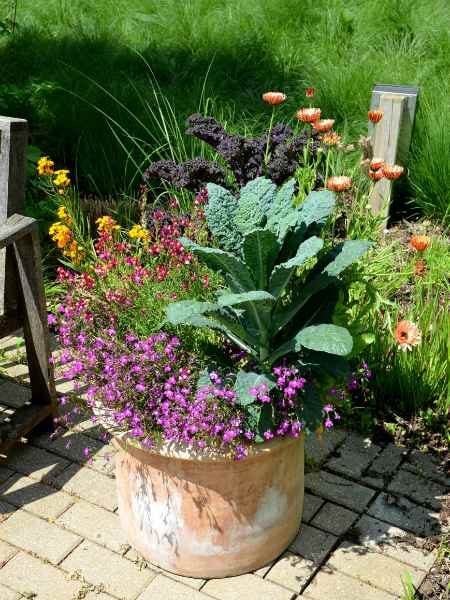
A visually appealing and functional container garden follows certain design principles:
A. The “Thriller, Filler, Spiller” Concept
- Thriller: Tall, eye-catching plant in the center or back (e.g., basil or a flowering plant like marigold).
- Filler: Medium-height plants surrounding the thriller (e.g., parsley, thyme).
- Spiller: Trailing plants that hang over the container edges (e.g., trailing petunia or creeping thyme).
B. Color Harmony
- Complementary Colors: Pair herbs with flowers that contrast yet complement, such as purple basil with yellow marigolds.
- Monochromatic Scheme: Use shades of one color for a subtle, elegant look.
- Seasonal Blooms: Rotate flowers seasonally to maintain color year-round.
C. Texture Variety
- Combine smooth, spiky, and feathery foliage for depth.
- Include edible flowers to add texture and enhance culinary appeal.
These principles help create a container garden that is both functional and visually stunning.
6. Planting Techniques
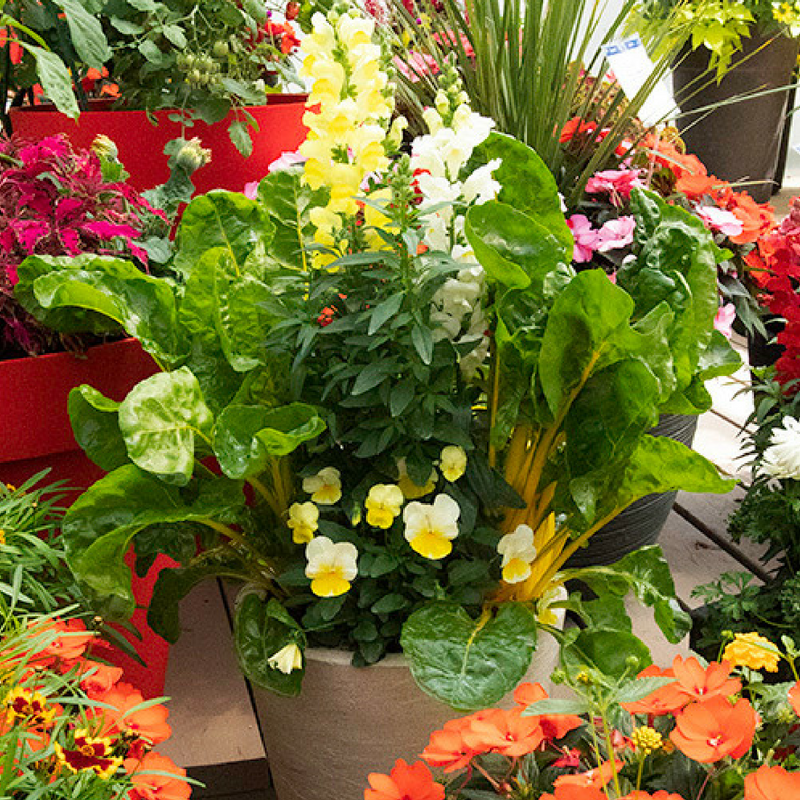
Proper planting ensures success in mixed containers:
- Prepare the Container: Add a layer of gravel or small stones for drainage.
- Add Soil: Fill with prepared potting mix, leaving space for roots.
- Position Plants:
- Place the tallest plants (thriller) first.
- Add filler plants around the thriller.
- Finish with trailing plants (spiller) at the edges.
- Spacing: Leave enough space to prevent overcrowding and ensure airflow.
- Water Thoroughly: Moisten soil after planting, ensuring even distribution.
Correct planting reduces competition for nutrients and promotes healthy growth.
7. Watering and Fertilization
Mixed containers require careful attention:
- Watering:
- Check soil moisture regularly.
- Water at the base to prevent fungal issues on foliage.
- Fertilization:
- Use a balanced, liquid fertilizer every 2–3 weeks.
- Slow-release fertilizers can support longer-term nutrition.
Proper watering and fertilization ensure vibrant flowers and productive herbs.
8. Pest and Disease Management
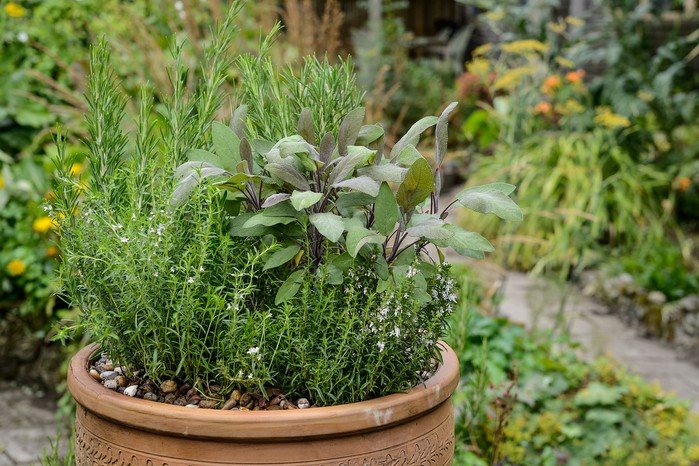
Mixed containers can attract pests if not managed properly:
- Common Pests: Aphids, spider mites, whiteflies.
- Prevention:
- Inspect plants regularly.
- Avoid overcrowding to improve airflow.
- Organic Remedies: Neem oil, insecticidal soaps, or companion flowers that repel pests.
- Disease Management: Remove dead leaves promptly; maintain well-draining soil.
Early intervention keeps your herbs and flowers healthy and productive.
9. Harvesting and Maintenance
- Herbs: Regularly harvest leaves to encourage bushier growth.
- Flowers: Deadhead faded blooms to encourage new flowers.
- Pruning: Trim leggy or overgrown plants to maintain shape.
- Replenishing Soil: Add compost or slow-release fertilizer every few months.
Consistent maintenance ensures long-term success of mixed containers.
10. Seasonal Considerations
Rotate plants seasonally for year-round beauty and productivity:
- Spring: Petunias, basil, and parsley.
- Summer: Marigolds, thyme, and chives.
- Autumn: Pansies, calendula, and coriander.
- Winter (indoors): Mint, parsley, and indoor flowering plants like violets.
Seasonal planting maximizes yields and maintains color throughout the year.
11. Benefits of Mixed Herb and Flower Containers
- Space Efficiency: Grow multiple plants in one pot.
- Aesthetic Appeal: Adds color, texture, and height variety.
- Pollinator Support: Attracts bees, butterflies, and beneficial insects.
- Pest Control: Companion flowers repel harmful pests naturally.
- Culinary Use: Fresh herbs are readily available for cooking.
- Mental Well-being: Provides relaxation, reduces stress, and enhances creativity.
Mixed containers are a practical, beautiful, and functional gardening solution.
12. Tips for Success
- Start with compact, container-friendly plants.
- Monitor water levels to prevent over- or underwatering.
- Rotate flowers seasonally to maintain interest and blooms.
- Experiment with different herb and flower combinations for culinary and visual benefits.
- Use vertical or tiered containers for limited space.
Following these tips ensures your mixed container garden thrives beautifully.
Conclusion
Mixing herbs and flowers in one container is a creative and practical approach to gardening, especially in small spaces. By selecting compatible plants, preparing nutrient-rich soil, using appropriate containers, and following design principles, gardeners can enjoy vibrant flowers, fresh herbs, and functional beauty.
Key Takeaways:
- Choose plants with similar sunlight and water requirements.
- Follow the thriller, filler, spiller principle for balanced arrangements.
- Maintain healthy soil and proper fertilization.
- Monitor for pests and diseases regularly.
- Harvest herbs and flowers consistently for continuous growth.
- Rotate seasonal plants to maintain color and productivity year-round.
By combining aesthetics with functionality, mixed herb and flower containers enhance home spaces while providing fresh, usable herbs and colorful blooms, making them a must-have addition to any balcony, patio, or indoor garden.
